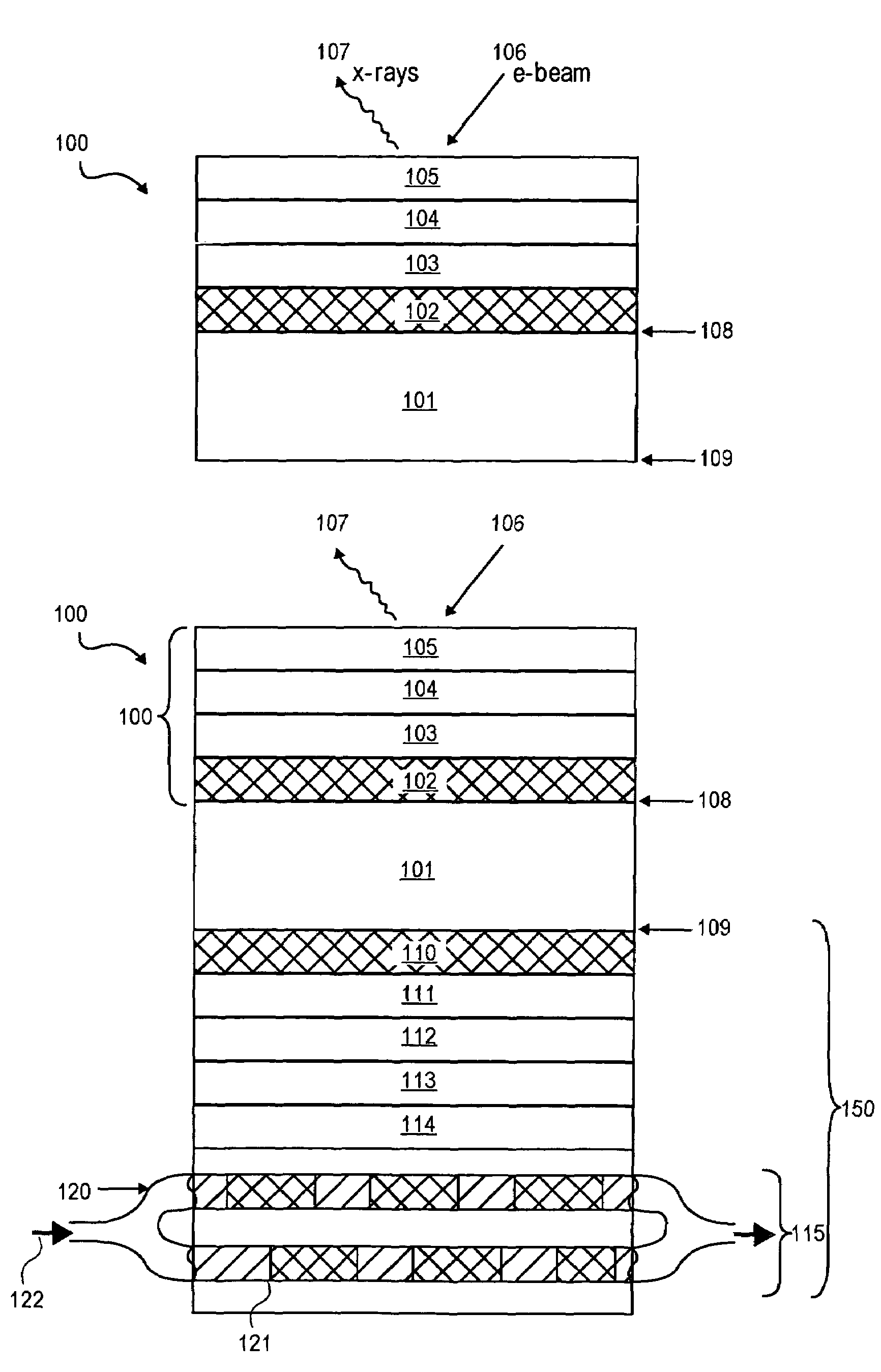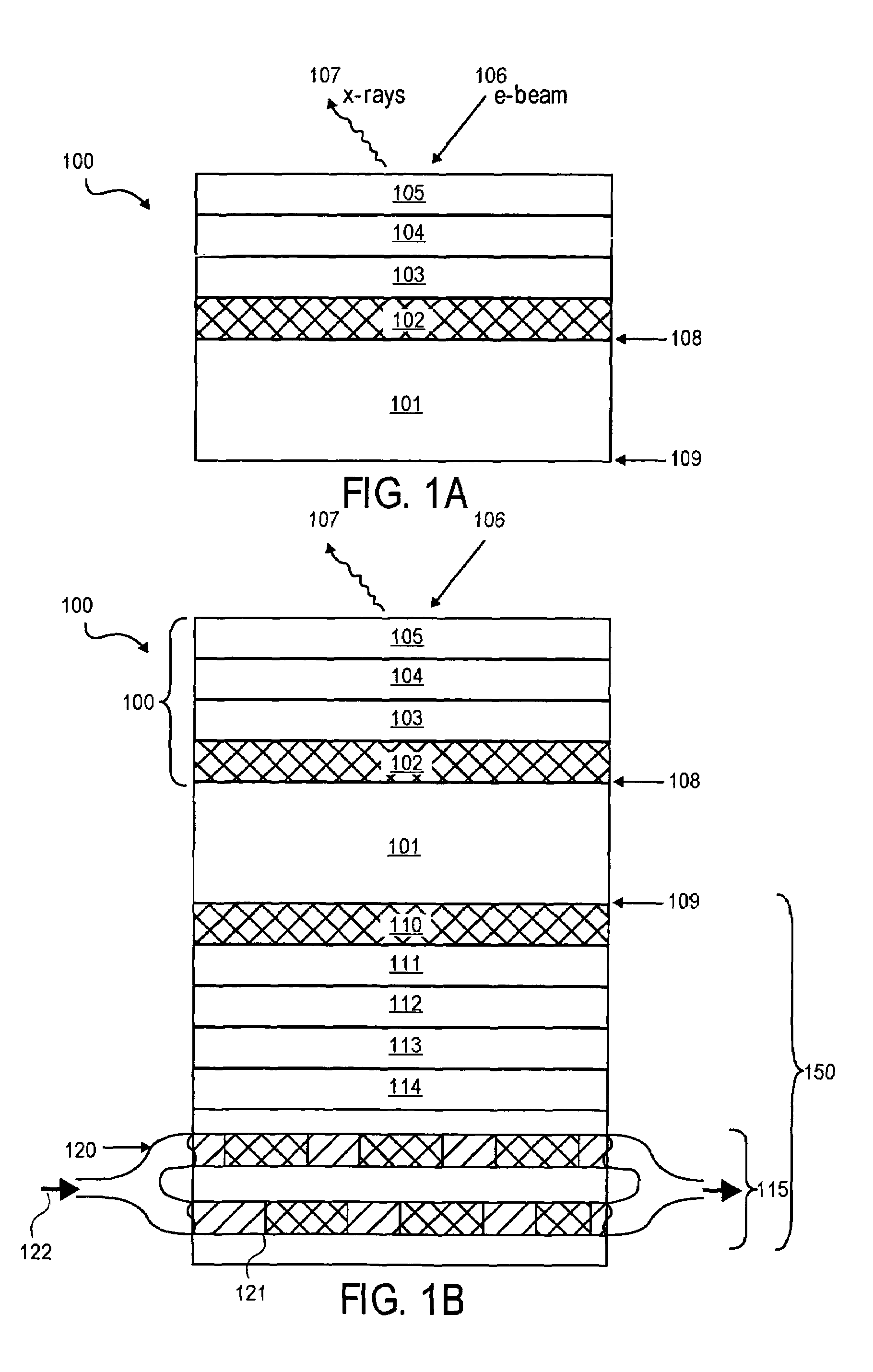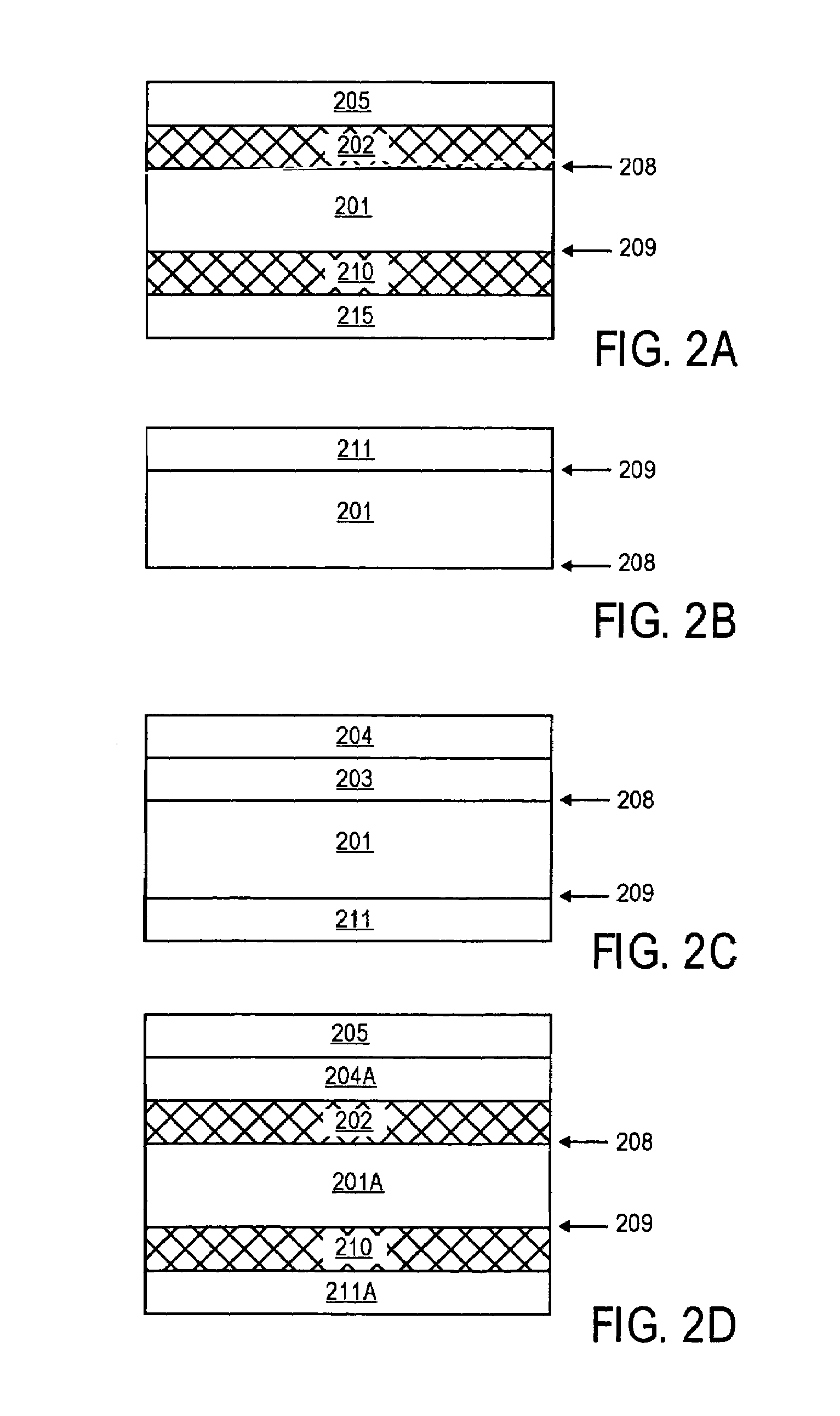Diamond anode
a diamond anode and diamond anode technology, applied in nuclear engineering, x-ray tube target materials, x-ray tube targets and convertors, etc., can solve the problem of metal anode degradation quickly, and achieve the effect of preventing damage to the ionizing radiation producing layer
- Summary
- Abstract
- Description
- Claims
- Application Information
AI Technical Summary
Benefits of technology
Problems solved by technology
Method used
Image
Examples
Embodiment Construction
[0022]In the following description, various aspects of the present invention will be described, and various details set forth in order to provide a thorough understanding of the present invention. However, it would be apparent to those skilled in the art that the present invention may be practiced with only some or all of the aspects of the present invention, and the present invention may be practiced without the specific details. In other instances, well-known features are admitted or simplified in order not to obscure the present invention.
[0023]FIG. 1A illustrates a cross-sectional view of the target side 100 of an embodiment of the anode of the present invention. In an embodiment of the invention, an electron beam 106 irradiates a radiation producing layer 105 of the anode to produce an x-ray beam 107, which is then used in an instrument.
[0024]Embodiments of the invention may include the use of other sources of energetic particle, other than an electron beam 106. Other sources o...
PUM
 Login to View More
Login to View More Abstract
Description
Claims
Application Information
 Login to View More
Login to View More - R&D
- Intellectual Property
- Life Sciences
- Materials
- Tech Scout
- Unparalleled Data Quality
- Higher Quality Content
- 60% Fewer Hallucinations
Browse by: Latest US Patents, China's latest patents, Technical Efficacy Thesaurus, Application Domain, Technology Topic, Popular Technical Reports.
© 2025 PatSnap. All rights reserved.Legal|Privacy policy|Modern Slavery Act Transparency Statement|Sitemap|About US| Contact US: help@patsnap.com



